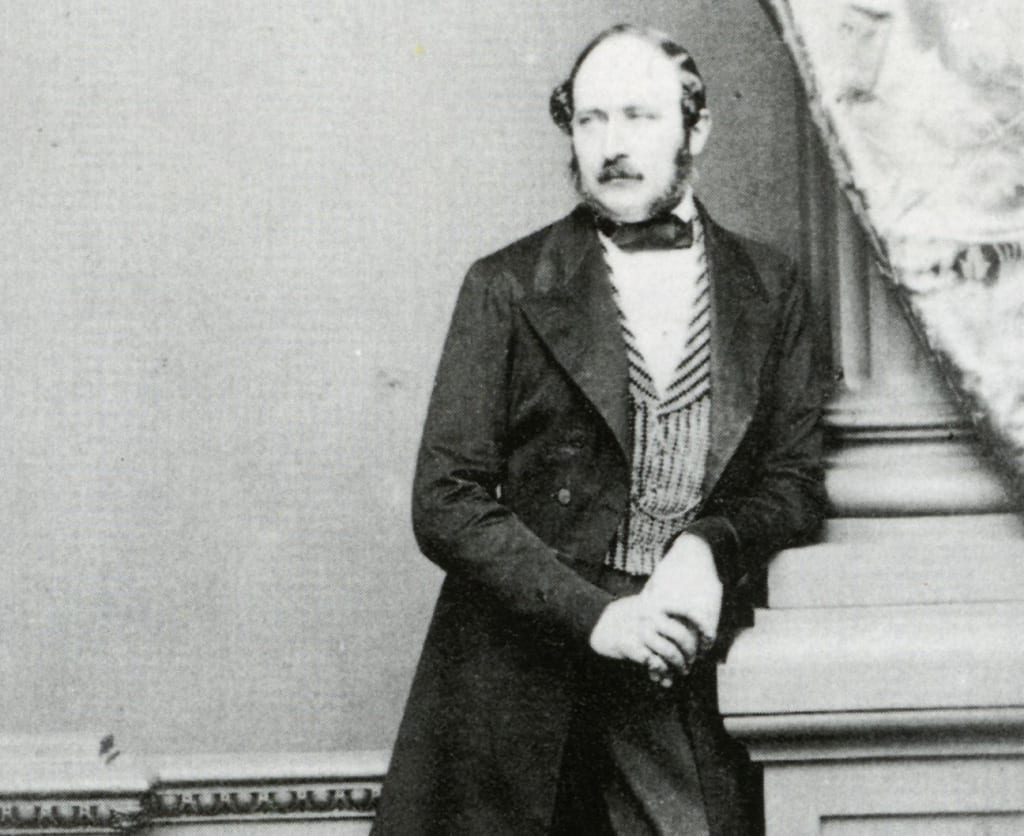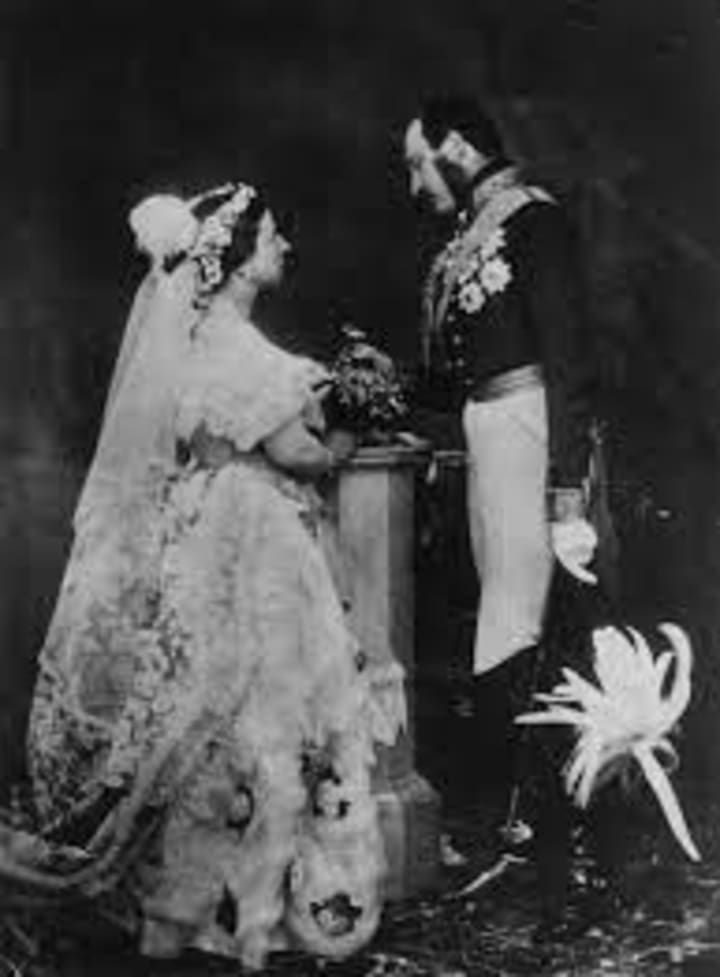Prince Albert, Prince Consort
"Nothing that makes you happy could ever be wrong"

We know Prince Albert as the husband of Queen Victoria and Consort to the Queen. Victoria loved Albert so much that when he died (before his time), she went into full mourning until her own death --- 40 years! So who was this Prince who stole a Queen’s heart?
Prince Franz August Karl Albert Emanuel was the younger son of the Duke of Saxe-Coburg-Saalfeld (later changed to Saxe-Coburg-Gotha) and Duchess Louise of Saxe-Coburg-Altenburg. Known as Prince Albert, this Prince was born on the 26th August, 1819, his future wife, Alexandrina Victoria, was born on 24th May, in the same year. Albert and Victoria were first cousins.
Albert was baptized into the Lutheran Evangelical Church on 19th September, 1819, and spent his childhood with his older brother, Ernest. It was a childhood that was scarred with ‘scandal’ when his parents separated and divorced and Albert’s mother was exiled from Court in 1824. The two brothers never saw their mother again and she died of cancer in 1831 at the age of 30. Their father married his niece (his son's cousin) Princess Marie of Wurttenberg, but she had very little impact on her step-sons' lives. (Sounds a bit mixed-up to me!). Prince Albert was educated in Brussels and at the University of Bonn, where he studied Law, political economy, philosophy and the history of art. The Prince played music and excelled at sport (especially fencing and riding), and his tutors included the philosopher Fichte and the poet Schlegel.
Leopold I, who was uncle to both Albert and Victoria, ‘promoted’ the thought of the couple marrying. A letter, written in 1821, by Albert’s paternal grandmother said that he was “the pendant to the pretty cousin” (Victoria). Victoria herself was aware of the ‘various matrimonial plans’ and critically appraised a parade of eligible princes. Victoria wrote of Albert: “is extremely handsome; his hair is about the same colour as mine; his eyes are large and blue, and he has a beautiful nose and a very sweet mouth with fine teeth; but the charm of his countenance is his expression, which is most delightful.”

In October, 1839, Albert came to England (with his brother Ernest) to visit Victoria who was now Queen and to ‘settle the marriage.’ Both Victoria and Albert were attracted to each other and Victoria proposed to Albert on 15th October, 1839, (Albert could not propose to the Queen). Albert was naturalised by Act of Parliament and granted the style of Royal Highness by an Order in Council, only then could the couple marry which they did at the Chapel Royal, St.James’s Palace on 10th February, 1840.
Albert became the Queen’s private secretary and chief confidential advisor, and encouraged his wife to be as hardworking as he was. Albert urged Victoria to abandon her Whig partisanship in favour of a more political neutrality. However, various government ministers did not appreciate Albert’s ‘meddling’, especially Lord Palmerston. Albert was also not popular with the British people, who looked at him as coming from an impoverished and undistinguished minor estate --- they thought that their new young Queen could have done better. It wasn’t until 25th June, 1857, that Queen Victoria granted her husband the title of “Prince Consort”!
The problem was that Albert was the Husband of the Queen of England but “not the master in the house.” In Albert’s own words: “I am very happy and contented; but the difficulty in filling my place with the proper dignity is that I am only the husband, not the master of the house.” Baroness Lehzen, who was Victoria’s former governess, ran the household and Albert was not happy with her, calling Lehzen the “house Dragon.” In June, 1840, whilst out on a public carriage ride, the now pregnant Victoria was shot at. Albert quickly moved to protect his wife and this gained him public support when it was printed in the newspapers how Albert’s courage and coolness during the attack saved the pregnant Queen. An Act in Parliament passed the Regency Act 1840 which designated Albert as Regent if Victoria died in childbirth. Remember, this was a time when many mothers died in childbirth due, mainly, to the lack of knowledge by the doctors.

The couple had nine children who survived to adulthood (which was remarkable for this Century). Albert’s “enlightened influence” on healthy running of the nursery added to the success. At last, Albert successfully managed to remove Lehzen who left Britain and never returned. The nine children were Victoria, Albert (later Edward VII), Alice, Alfred, Helena, Louise, Arthur, Leopold and Beatrice. Each one married into Royalty in Europe.
Family life was very important to Prince Albert and he found much pleasure in the company of all his children. The Prince enjoyed Christmas and it’s thanks to him that the Christmans tree is so popular today. The couple’s homes were Buckingham Palace, Windsor Castle and Osborne House, with the Prince supervising closely the redesigning of Osborne House and the building of the new Balmoral Castle. Being interested in agricultural science, the Prince studied the new developments in farming and modernized the farms at Windsor, Osborne and Balmoral. Albert’s knowledge and experience of the continent gave him considerable influence over his wife when it came to foreign affairs. He also corresponded freely with Sovereigns on the Continent (some whom he was related to) for diplomatic and political reasons. In England, the Prince exerted his influence in the direction of humanitarianism and moderate reform. Also, being a very modern Prince, Albert spoke out against slavery and child labour. Albert was determined that England should be at the forefront of ‘modern science, art appreciation and art education.’
The Prince Consort: brought order to the administration of The Royal Collection / was President of the Fine Arts Commission / decorated (or organized the decoration of) the new Palace of Westminster and had amazing success with the Great Exhibition of 1851, which was a personal triumph as he initiated it and presided over the preliminary planning. Loving music, composing on the organ and singing and playing the piano, Prince Albert was appointed a Director of the Concerts of Ancient Music in London, in 1840, and “worked with” the composers Schubert, Schumann and Mendelssohn by selecting music for the Philharmonic Society. He was elected as Chancellor of Cambridge University, in 1847, and founded the Imperial College in London, which was the first British university to be dedicated to scientific research.
Prince Albert was very active in supporting the Army. He suggested setting up an Army training camp, and urged reform to overcome the inadequacies exposed by the Crimean War. Albert championed the new reward for acts of extreme valour --- “The Victoria Cross”!

In 1859, Prince Albert became ill with stomach cramps, which steadily got worse. On December 9th, 1861, William Jenner, one of Albert’s doctors, diagnosed him with typhoid fever. The Prince Consort died on 14th December, 1861, at Windsor Castle. The diagnosis was typhoid fever but the ongoing stomach pains (which Albert had for two years) indicate that the Prince may have had kidney failure or abdominal cancer. His wife, Queen Victoria, was overwhelmed with grief. Albert’s body is in the Frogmore Mausoleum, which was finished in 1871.
It is interesting to see how Prince Albert carved out a life for himself and how, eventually, the “people” came to love him. He was the husband of the Queen of England, but not the King.
(My research comes from Wikipedia, Britannica and “The Royal Family")
About the Creator
Ruth Elizabeth Stiff
I love all things Earthy and Self-Help
History is one of my favourite subjects and I love to write short fiction
Research is so interesting for me too






Comments
There are no comments for this story
Be the first to respond and start the conversation.